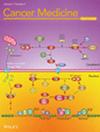Association Between Systemic Immunity-Inflammation Index (SII) and Fatigue, Cancer, and Cancer-Related Fatigue: Insights From NHANES (2005–2018)
Abstract
Objective
To investigate the association between the systemic immunity-inflammation index (SII) and fatigue, cancer, and cancer-related fatigue (CRF) populations.
Methods
The National Health and Nutrition Examination Survey (NHANES) from 2005 to 2018 provided data for this retrospective cross-sectional study. By dividing the platelet count by the neutrophil count and the lymphocyte count, SII was calculated. Participants were categorized into four groups: normal, fatigue, cancer, and cancer-related fatigue (CRF), with the normal group serving as the reference. Binary logistic regression was applied to assess the correlations. The dose–response relationship between SII and outcomes in the four groups was evaluated using restricted cubic splines. Use threshold effect analysis to determine the optimal SII value for each of the three groups. Stratified and subgroup analyses were performed based on sociodemographic factors and confounders, with specific attention to fatigue severity levels (mild, moderate, severe) in the fatigue and CRF groups.
Results
Data analysis included a total of 32,491 participants, including 14,846 in the normal group, 14,581 in the fatigue group, 1520 in the cancer group, and 1544 in the CRF group. The results of binary logistic regression showed that SII was positively correlated with the fatigue group (1.43[1.33, 1.55]), cancer group (1.67 [1.43, 1.95]) and CRF group (1.93 [1.66, 2.25]). Restricted cubic spline analysis revealed a linear relationship between SII and outcomes. The threshold values (k) for each of these groups were identified as 464.78 × 103 cells/μL, 448.97 × 103 cells/μL, and 454.65 × 103 cells/μL, respectively. Stratified analysis indicates that most groups exhibit significant differences. The subgroup analysis indicated that fatigue severity increased with higher SII levels, with the CRF group exhibiting the highest rate of severe fatigue (171% increase).
Conclusion
SII is positively correlated with fatigue, cancer, and CRF in a linear way. Higher SII values are associated with greater fatigue, particularly in the CRF population.


 求助内容:
求助内容: 应助结果提醒方式:
应助结果提醒方式:


